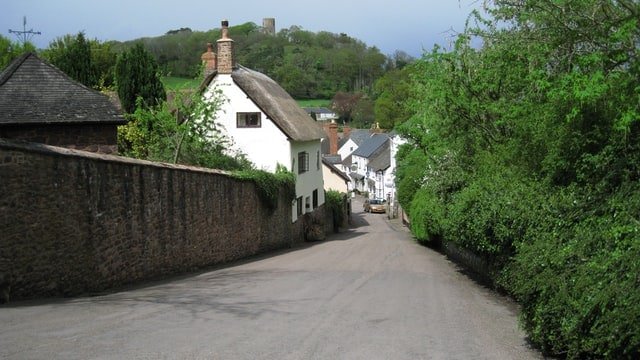
How to Fix Rising Damp
No homeowner wants to deal with damp problems in their property, when water affects the walls and leads to wet patches that can ultimately cause mould and further problems like wet rot to the timber and structural issues. Rising damp is one of the most serious damp problems to occur in a home since it is often an indication of a problem with the damp proof course, which is a waterproof layer spanning the width and length of the internal walls to prevent water from getting inside and causing damp in your home.
What is Rising Damp?
Rising damp is a type of damp that occurs when water rises up the walls from the ground below. This is usually caused by an issue with the damp proof course. It can often occur in older homes where a damp proof course is not present, but might become a problem if your damp proof course is faulty or has not been correctly installed. Rising damp occurs due to capillary action, which is where water is sucked upwards through a small opening such as tiny holes in the bricks or stone of the walls.
What Does Rising Damp Look Like?
One tell-tale sign of rising damp is brown or yellowing patches on the ground floor walls, usually above the skirting boards. In some cases, the damp might also affect your skirting board woodwork and these might have signs of damp or rot. While rising damp will only usually rise up to a certain height, some wall coverings like certain paints or vinyl wallpaper can lead to salt deposits from the brick appearing higher up on the walls.
What Does Rising Damp Look Like on Internal Walls?
If you have noticed damp on your internal walls, it’s important to determine if you are actually dealing with rising damp or if another type of damp, like penetrating damp or condensation damp, could be to blame. One of the main signs that it is rising damp that you are dealing with is that the damp will not usually go any higher than 1.2 metres up the wall. It will also only occur on the ground floor, so if you have noticed damp around the skirting boards on the top floors of your property, this is usually down to another issue. If you are not sure if you are dealing with rising damp or another type of damp, a professional can help you determine the cause.
What Causes Rising Damp?
Rising damp is usually caused by an issue with your damp proof course. If you live in a home where there is no damp-proof course present, rising damp is likely to become a problem for you. You can easily check if there is a damp proof course installed on your property; it should be visible on the exterior walls at around six inches from the ground level. However, even if there is a damp proof course present, this does not always mean that it is functioning correctly. A damp-proof course that has become faulty due to wear and tear over time, or was not correctly installed, can lead to rising damp problems.
What Causes Rising Damp in Internal Walls?
A bridging or breach of the damp proof course is one of the most common reasons why rising damp might occur on an internal wall of your home. In this instance, the damp proof course is installed and functioning correctly; however, something has been put in place that has caused the moisture to be able to get over the damp proof course and into the walls of your home. Something attached to your walls like an area of ground next to the home that’s higher up than the damp proof course or a structure that has been installed at a higher level will provide a bridge for the moisture to get over the damp proof course and enter your home. This can also be caused by debris that might be blocking the cavity wall and as a result, giving the moisture a bridge to reach your property on the inside.
How to Treat Rising Damp
Treating rising damp will always involve finding the root of the problem with the damp proof course and rectifying it before you carry out repairs on any damage that has occurred as a result. Although it might be tempting to simply get a damp-proof undercoat and some new paint to paint over the damp so it isn’t noticeable, this should be the last step in the process. Doing the opposite will only mean that you have to repeat the process in the future when the damp problems ultimately return. Rising damp is not an issue that you can expect to go away on its own, which is why it is important to have a professional come and carry out an inspection on your home and your damp proof course to determine which treatment will be best. In some cases, it is simply a matter of removing the blockage or structure that has caused your damp proof course to become bridged, which will remove the access to the moisture.
How to Treat Rising Damp in an Old House
In an older house, rising damp might often be the result of a damp proof course that is not present, or a faulty damp proof course that has deteriorated over time due to age. If there is no damp-proof course present in your older home, you will need to have one installed in order to prevent further damp issues. While it is harder to install a damp proof course in an existing property compared to when buying a new one, the right tradesperson can ensure that a fully-functional damp proof course is installed in your home. In existing properties, this is often done by injecting water-repellent chemicals into the brick.
How to Get Rid of Rising Damp When the Damp Proof Course is Bridged
If bridging of the damp proof course is the reason why you are dealing with rising damp in your home, the good news is that this is often one of the easiest problems to rectify. It will usually involve identifying and removing anything that could have caused the damp proof course to become bridged, such as areas of higher ground or structures that have been installed outside of the home, and removing them or lowering them. Adjusting the structure to ensure that it is no higher than the damp proof course will usually solve the problem.
How to Fix Rising Damp with a New Damp Proof Course
In some cases, a new damp proof course may need to be installed in order to stop and prevent the rising damp from reoccurring in the future. This should always be carried out by a trained professional, since damp proof course errors in installation could lead to further issues in the future. A new damp proof course might be needed in many situations, including if there is no damp-proof course present in your property or if the existing damp proof course is no longer functioning correctly due to age, wear and tear. You may need to have a new damp proof course installed higher in the walls if the damp is due to a bridging of the damp proof course that has been caused by a structure that you cannot remove. If your neighbour’s home has a damp proof course that has been installed higher than yours, this can also lead to rising damp problems in your home and you may need to have a new damp proof course installed higher up to match in order to prevent the problem from continuing.
How to Stop Rising Damp
Stopping rising damp will almost always involve repairing any problems with the damp proof course. When the damp proof course is faulty, bridged or not present, it will continue to allow moisture to enter the walls of your home where it will lead to rising damp, no matter how many damp proofing measures you might take inside. Since the water is often originating at ground level, damp-proofing the sides of the exterior or interior walls is unlikely to solve the problem over the long-term and may only become more expensive for you since this is a job that you will likely need to repeat again in the future as your home experiences ongoing damp problems.
The best way to stop rising damp is to get in touch with a professional who can help you determine the root cause of the issue and the best course of action available for rectifying it. Along with treating the root cause and helping you fix any associated damp damage, a professional can provide you with further advice for damp proof course and property maintenance in the future to ensure that the problem does not return.
Rising damp is most usually caused by a problem with your damp proof course, which is in place to prevent moisture from reaching the internal walls from ground level.

